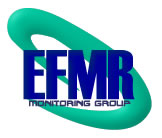Incident Chronology at TMI from NRC: 1979-2014
March 28, 1979, 4:00 a.m. - Beginning of the Three Mile Island (TMI)
Unit-2 loss-of-coolant, core melt accident. The plant came within 30
minutes of a full meltdown. The reactor vessel was destroyed, and large
amounts of unmonitored radiation was released directly into the
community.
March 28, 1979, 4:30 p.m. - Press conference of Lt. Governor William Scranton:
This is an update on the incident at Three-Mile Island Nuclear Power
Plant today. This situation is more complex than the company first led
us to believe. We are taking more tests. And at this point, we believe
there is still no danger to public health. Metropolitan Edison has given
you and us conflicting information. We just concluded a meeting with
company officials and hope this briefing will clear up most of your
questions. There has been a release of radioactivity into the
environment. The magnitude of this release is still being determined,
but there is no evidence yet that it has resulted in the presence of
dangerous levels. The company has informed us that from about 11 a.m.
until about 1:30 p.m., Three-Mile Island discharged into the air, steam
that contained detectable amounts of radiation.
March 30, 1979 - Governor Richard Thornburgh recommended an
evacuation for preschool children and pregnant women living within five
miles of the plant. Out of a target population of 5,000, over 140,000
Central Pennsylvanians fled the area. Schools in the area closed...
The U.S. House of Representatives committee examining reporting information during the accident concluded:
The record indicates that in reporting to State and federal officials
on March 28, 1979, TMI managers did not communicate information in
their possession that they understood to be related to the severity of
the situation. The lack of such information prevented State and federal
officials from accurately assessing the condition of the plant. In
addition, the record indicates that TMI managers presented State and
federal officials misleading statements (i.e. statements that were
inaccurate and incomplete) that conveyed the impression the accident was
substantially less severe and the situation more under control than
what the managers themselves believed and what was in fact the case.
Download Document
Subscribe to:
Post Comments (Atom)

No comments:
Post a Comment